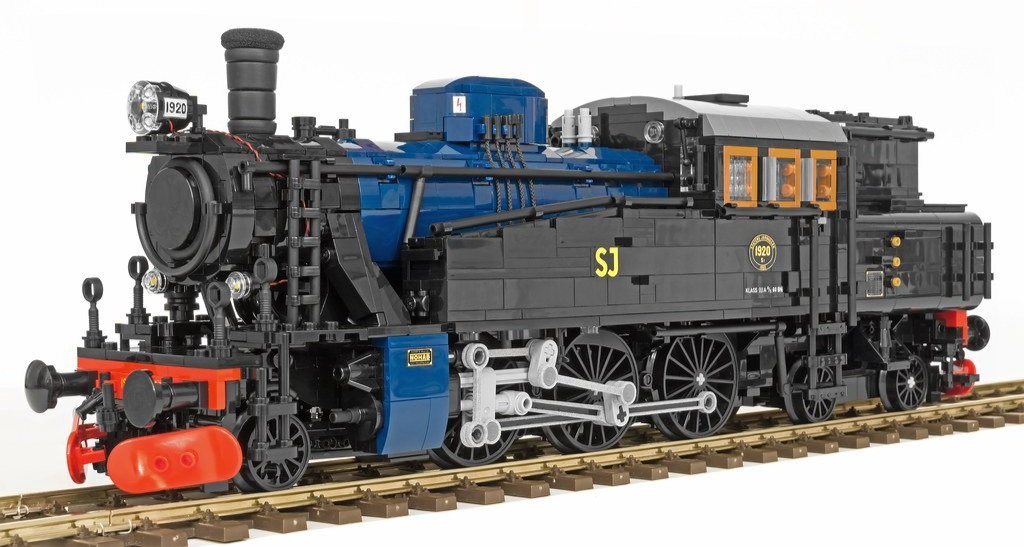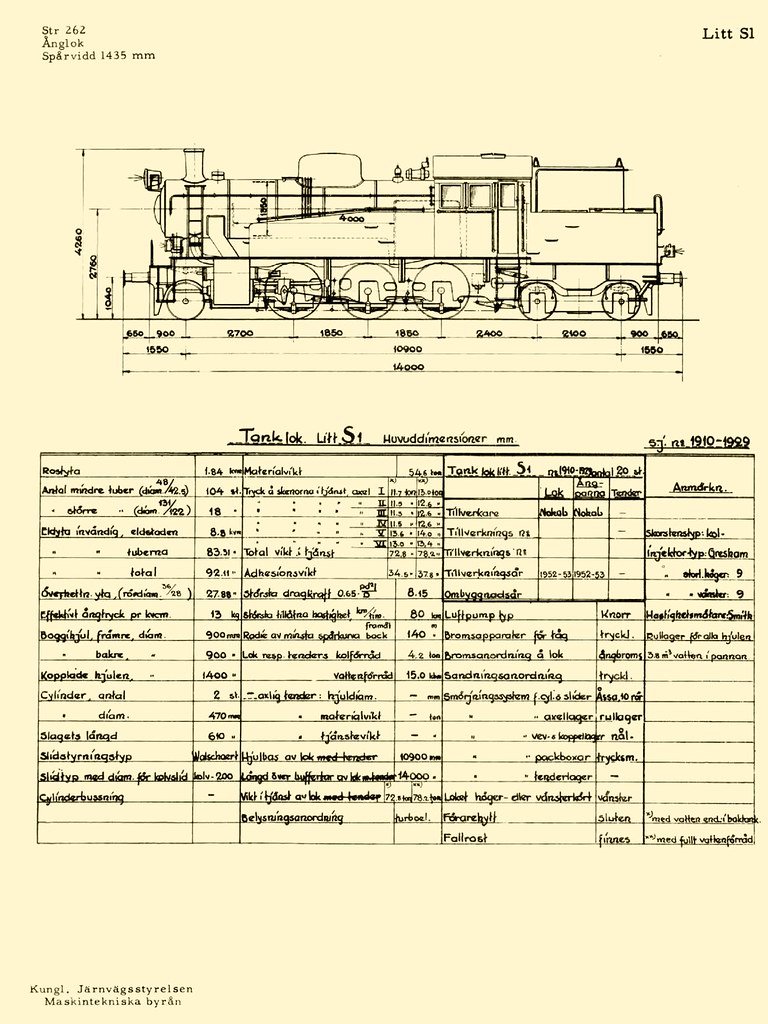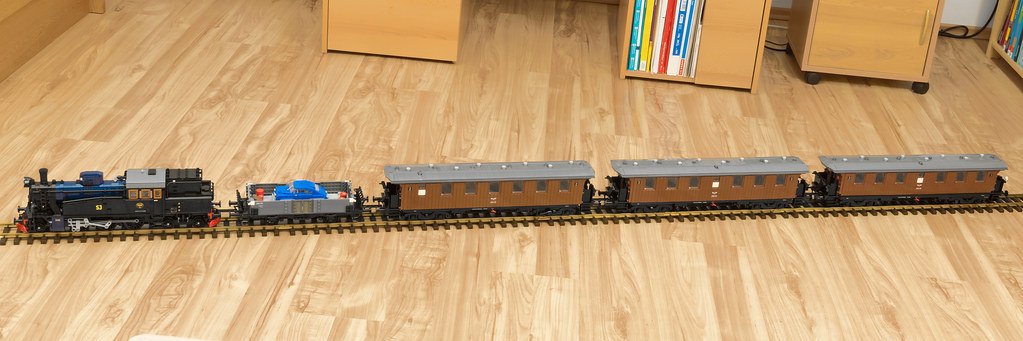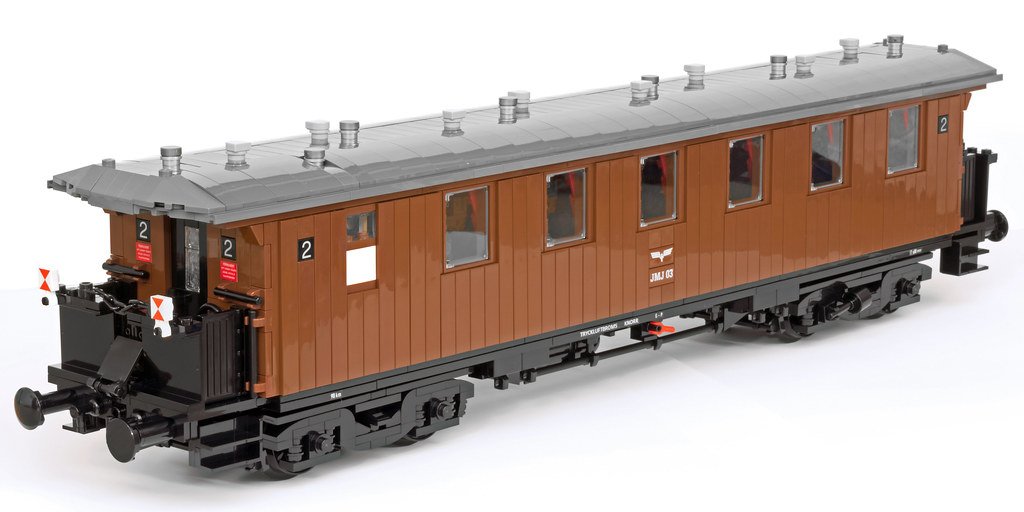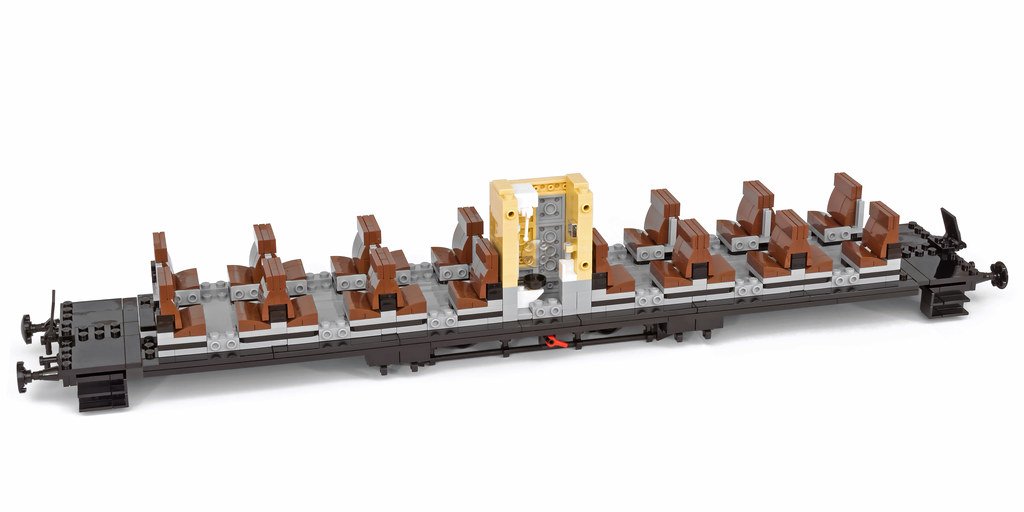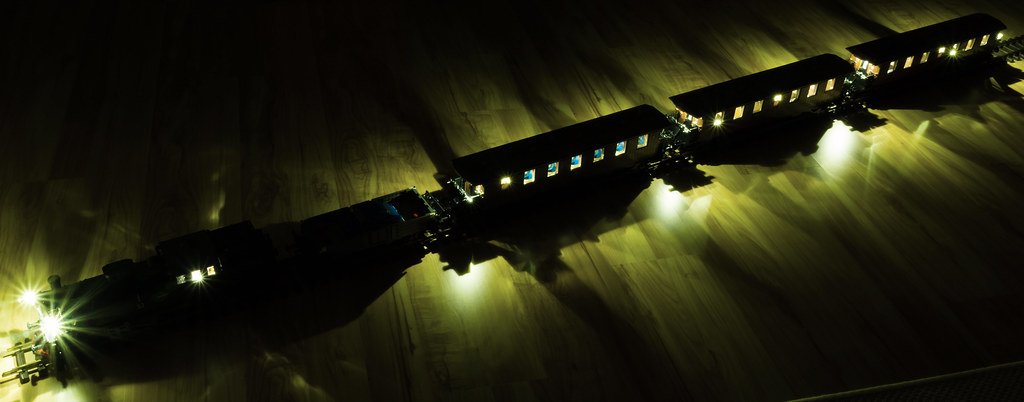Swedish Steam: A Tremendous Train Two Years in the Making
/Every now and then a LEGO train MOC comes by that takes your breath away and steams things up. Today is one of those days!
Not just a train but a wonderful Swedish Class S1 2-6-4. Doesn't ring a train bell? Well, I get that because the name doesn't say much to me either. What does speak to me is the elegance of the MOC that carries that name. It's a cleverly built steam engine made by Sven J. I admire MOCs like this, but I know very little about trains or building trains. Good thing Sven J was kind enough to give us a bit more insight!
Marco: You've mentioned that it's your all-time favorite engine. Can you elaborate a bit more on why that is?
Sven: I know the “real“ S1 1916, which is preserved on the “Angelner Dampfeisenbahn“ in Northern Germany. I saw it when I was 14 years old, and it was love at first sight. The elegant lines and proportions, the colors, and the snow plows were all very different from the German locomotives I knew up to then. And these features appealed (and still appeal) very much to me. Besides, the “SJ“ on the engine’s sides is not only the abbreviation for “Statens Järnvägar“, the Swedish State Railways, but also my initials… ;-)
Marco: How do you approach a build like this? Do you maybe start digitally or make drawings first to match the scale? Do you sometimes start over entirely or just partially?
Sven: I always try to find blueprints of the prototype first, then I design a digital model in Stud.io. I only start building in real life when I’m happy with the digital model. This way I don’t have to start over entirely, just tweak some details which I find during building discovering that the original design had some flaws.
Marco: How long does a creation like this take you to build?
Sven: Usually a model like this takes about 1-2 months for research, 2-3 months for designing, and 3-6 months for the actual building. But of course, it depends on how often I actually sit down and work on the model – mostly on weekends, and not on each weekend. The S1 took two years all in all, but there were periods when I didn’t work on it at all for months as other things in life had become more important than LEGO trains. If you want to see the journey through many “work-in-progress” photos, you can peruse my Flickr account.
Marco: A lot of model/train builders use non-LEGO elements. Do you use any of those, and why those parts specifically?
Sven: There are several non-LEGO elements: the wheels are from Big Ben Bricks, as no LEGO parts are available in the sizes I needed. The rods and valve gear parts are 3D printed elements of my own design; with LEGO parts alone, it wouldn’t be possible to design a working (and at the same time good-looking) but not too bulky valve gear. Some Technic pins were cut to be used in the valve gear.
Besides, I used some BrickArms U-tabs for the small ladder below the chimney, as no such LEGO parts exist, and a handful of 1x1 modified tiles with clip on top from Bluebrixx – they are not available from LEGO in dark blue. Then there’s the BuWizz, which is more compact and powerful than any of LEGO’s battery/RC devices, the LED equipment from Brickstuff and the sound generator system. Last but not least, a foam rubber cover for an earphone was used as a wire mesh spark arrestor on top of the chimney.
Marco: As for the tracks, it clearly shows in the photo those aren't LEGO. What brand are they, and why those?
Sven: The photos show gauge 1 track (45 mm) from Märklin. Obviously, LEGO track is too narrow for my large-scale locomotives. The Märklin track is only for presentation, though, as the flanges of LEGO and BBB wheels are quite high—when running they hit the little clamps that fasten the rails to the sleepers. So for operating my models, I use the higher LGB G-scale track, which also has 45 mm gauge. I chose this scale and track because I already had gauge 1 and G-scale models and rails when I returned to LEGO after my dark ages.
Marco: Is there a certain aspect or part of the train that you really like? For example, I find the use of the skateboard incredibly clever!
Sven: Honestly I never think about the question of whether I particularly like certain aspects…
What gave me the biggest headaches during the design phase were probably the double-angled steam inlets and their attachment to the smokebox, the gentle slope of the side tanks, and the SNOT design of the rear tank with its rounded edges, so I think I like these parts best. I had used skateboards as snow plows before, so that wasn’t a new thing for me! ;-)
Marco: It’s new to me! Thank you for this interesting information and for your time!
Inspired to build your own steam engine? It fits so well in plenty of areas. Western, Steampunk, or even Fantasy like the Hogwarts Express!
Best of BrickNerd - Article originally published August 18, 2022
Which train would you like to see built out of LEGO with as much detail?? Let us know in the comments below!
Do you want to help BrickNerd continue publishing articles like this one? Become a top patron like Charlie Stephens, Marc & Liz Puleo, Paige Mueller, Rob Klingberg from Brickstuff, John & Joshua Hanlon from Beyond the Brick, Megan Lum, Andy Price, Lukas Kurth from StoneWars, Wayne Tyler, Monica Innis, Dan Church, and Roxanne Baxter to show your support, get early access, exclusive swag and more

